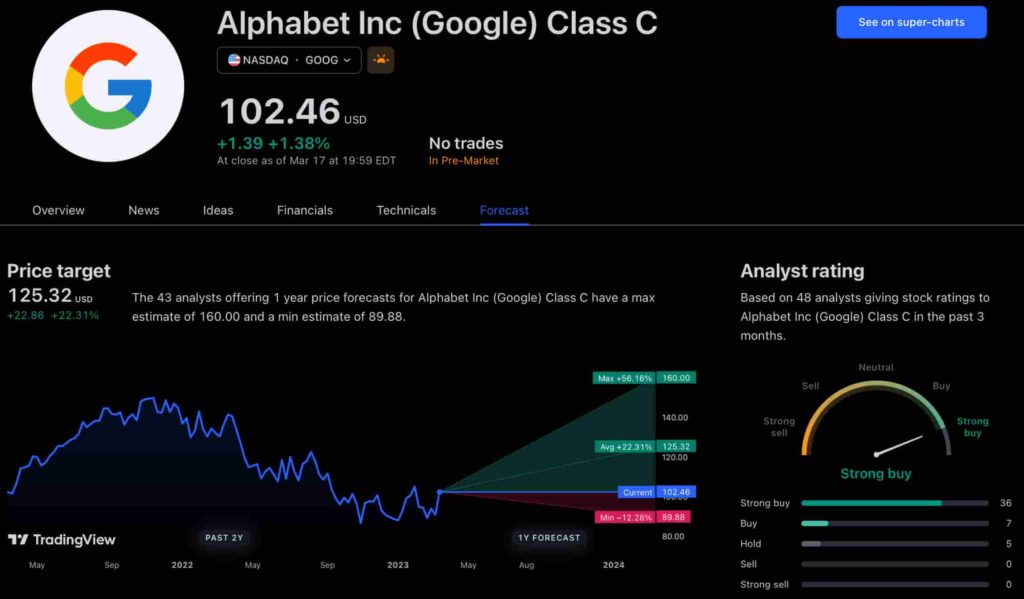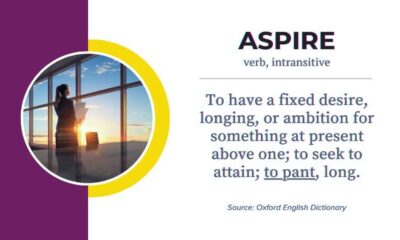The new app is called watchGPT and as I tipped off already, it gives you access to ChatGPT from your Apple Watch. Now the $10,000 question (or more accurately the $3.99 question, as that is the one-time cost of the app) is why having ChatGPT on your wrist is remotely necessary, so let’s dive into what exactly the app can do.
NEWS
5 Benefits to Using Visual Content in PDF Marketing Materials

Creating PDF marketing materials that reliably turns readers into sales is more important now than ever.
One way to supercharge your marketing material is by adding strategically chosen images.
Adding the right images to your PDF marketing assets is proven to grow more sales.
Scientists have discovered that humans remember images better than words. They believe it’s an evolutionary survival feature to be able to vividly recall what was seen.
Research has also shown that images are a powerful tool for communicating your marketing message and increasing sales.
It may sound startling, but images are processed in the brain remarkably fast and the memory of those images are retained at a far higher rate and for a longer period of time than words.
Why Adding Images to PDFs Is Useful
There are five reasons that are proven to help increase the conversion rate of your marketing materials.
1. Images Are Emotionally Engaging
Images are a great way to engage readers with a positive emotional impact.
Research has shown that images can influence a reader’s mood.
What’s important about this is that this emotional influence can actually help your marketing message get through.
Another benefit of engaging a client on an emotional level is that it helps to hold the readers attention, keeps them engaged with the marketing material.
According to a research paper titled, Impact of Images in Print Media.
“…pictures have an unquestioned capacity to arouse emotions, and adds that such emotion may influence attitudes directly or indirectly by impacting message processing.
Strivers (1994) believed visual images appeal to human beings on an emotions level and posited the more vibrant, excited, or convincing an image is, the more likely it will affect an individual. In the marketing context, similar outcomes are noteworthy.
Since images can create a sense of drama, they hold a viewer’s attention and create emotional involvement resulting in personal identification between the subjects of the story and the viewer.”
For some context, it’s a good idea to show images that show a person experiencing or expressing success while using the product or service that is the subject of the marketing material.
It allows the person viewing the marketing material to see themselves into the image, as the research says, it creates “personal identification between the subjects of the viewer.”
Always sell the benefit that the product provides.
An image that communicates the benefit stays embedded with the consumer for a long time.
2. Images Reduce Reading Fatigue
A page of text can look intimidating.
And even though a potential client is motivated to read the marketing material to understand if your services or products are a good fit, a page of words still feels like a chore.
Images can break up the textual passages while also communicating your marketing message.
Thus they serve as islands of visual rest between the words but also continue the process of positive messaging, influencing the sale.
3. Images Are Easier to Remember
Scientific research has discovered that the mind has a remarkable ability to recall images. Images that humans see stick with them.
That makes images a remarkably effective way to convey an emotion or a message.
It has been known for decades from multiple experiments that humans can remember over 2,000 images seen over testing across several days with 90% accuracy.
This held true even with images that were seen for only brief amounts of time.
In a research study called, Neural Correlates of the Episodic Encoding of Pictures and Words, researchers used neuroimaging on the brain with test subjects reading text and viewing images.
The goal was to see how the brain processed words and images and to find an explanation of why images can be recalled so well.
It was determined that the regions of the brain involved in processing images are directly related to memory.
This is how it works:
“…(The) medial temporal cortex has long been known from lesion experiments to be important for episodic memory and may be particularly important for encoding new information.
The greater activity in medial temporal cortex during encoding of pictures compared with words suggests that pictures more directly or effectively engage these memory-related regions in the brain, thereby resulting in superior recollection of these items.”
They also discovered that the regions of the brain associated with reading words are not associated with memory tasks.
“Words, on the other hand, activate left hemisphere regions previously shown to be involved in language tasks, including left frontal, temporal, and parietal regions. This result implies that encoding of words primarily invokes a distributed system of regions involved in linguistic processing that is less able to support later retrieval from episodic memory.”
The study recalled a theory that proposes that a reason why images work so well is because they are associated in the mind with previous experiences.
It states:
“One theory of the mechanism underlying superior picture memory is that pictures automatically engage multiple representations and associations with other knowledge about the world, thus encouraging a more elaborate encoding than occurs with words. This theory implies that there are qualitative differences between the ways words and pictures are processed during memory.”
4. Graphs Communicate Visually
As noted above, visual representations of ideas can be processed and remembered better than just words.
But another fascinating quality of images is that they are processed at remarkable speeds.
What takes 20 seconds to communicate by reading can be communicated in milliseconds with an image.
The process of viewing is tied to identifying concepts.
By using a graph or other similar visualization of success, a marketer is effectively communicating the concept itself via the mechanism of visual stimulation.
An MIT news article, MIT Neuroscientists Find the Brain Can Identify Images Seen for as Little as 13 Milliseconds, explains the details.
The news report states:
“…a team of neuroscientists from MIT has found that the human brain can process entire images that the eye sees for as little as 13 milliseconds – the first evidence of such rapid processing speed.
…The fact that you can do that at these high speeds indicates to us that what vision does is find concepts. That’s what the brain is doing all day long – trying to understand what we’re looking at,” says Mary Potter, an MIT professor of brain and cognitive sciences and senior author of the study.
…This rapid-fire processing may help direct the eyes, which shift their gaze three times per second, to their next target, Potter says. “The job of the eyes is not only to get the information into the brain, but to allow the brain to think about it rapidly enough to know what you should look at next. So in general we’re calibrating our eyes so they move around just as often as possible consistent with understanding what we’re seeing,” she says.”
5. Images Build Trust & Increase Profitability
eBay researched the sales statistics and features of hundreds of millions of sales.
The purpose of the research was to determine if images positively affected the conversion rate (the rate of how many people browsing turned to buyers), among other factors.
eBay discovered that images do in fact have a positive effect on holding a buyer’s attention, building trust in the seller, and increasing the conversion rate.
Here’s that research: Is a Picture Really Worth a Thousand Words? – On the Role of Images in E-commerce (PDF).
According to the research by eBay on hundreds of millions of auctions:
“Our results show positive evidence that images help increase buyer‘s attention, trust and conversion rate.
Among the three properties of images, our study shows that increasing number of images of the product – which is equivalent to providing a more complete visual representation of the product, is an effective way to improve sell-through.”
Part of the study looked at products that failed to sell and were subsequently re-listed for sale. They looked at more than 55,000 sales.
What they discovered was a strong correlation between adding more images and profitability.
According to the study:
“Strong correlation between increment in photo count and profit rate. … We found a clear trend that as photo count increases, the probability of making profit also increases.”
Particularly for marketing materials involving products, adding more images is associated with higher sales and profitability within the context of the auctions.
It may be useful to add more images of products or service results as this may help increase trust and sales.
Consider Adding Images to PDF Marketing Materials
It’s clear that adding images to PDF marketing materials is a winning strategy for increasing sales, stimulating a positive emotional response, and communicating your message efficiently.
Maybe it’s time to give your marketing material a second look.
Facebook Faces Yet Another Outage: Platform Encounters Technical Issues Again

Uppdated: It seems that today’s issues with Facebook haven’t affected as many users as the last time. A smaller group of people appears to be impacted this time around, which is a relief compared to the larger incident before. Nevertheless, it’s still frustrating for those affected, and hopefully, the issues will be resolved soon by the Facebook team.
Facebook had another problem today (March 20, 2024). According to Downdetector, a website that shows when other websites are not working, many people had trouble using Facebook.
This isn’t the first time Facebook has had issues. Just a little while ago, there was another problem that stopped people from using the site. Today, when people tried to use Facebook, it didn’t work like it should. People couldn’t see their friends’ posts, and sometimes the website wouldn’t even load.
Downdetector, which watches out for problems on websites, showed that lots of people were having trouble with Facebook. People from all over the world said they couldn’t use the site, and they were not happy about it.
When websites like Facebook have problems, it affects a lot of people. It’s not just about not being able to see posts or chat with friends. It can also impact businesses that use Facebook to reach customers.
Since Facebook owns Messenger and Instagram, the problems with Facebook also meant that people had trouble using these apps. It made the situation even more frustrating for many users, who rely on these apps to stay connected with others.
During this recent problem, one thing is obvious: the internet is always changing, and even big websites like Facebook can have problems. While people wait for Facebook to fix the issue, it shows us how easily things online can go wrong. It’s a good reminder that we should have backup plans for staying connected online, just in case something like this happens again.
NEWS
We asked ChatGPT what will be Google (GOOG) stock price for 2030

Investors who have invested in Alphabet Inc. (NASDAQ: GOOG) stock have reaped significant benefits from the company’s robust financial performance over the last five years. Google’s dominance in the online advertising market has been a key driver of the company’s consistent revenue growth and impressive profit margins.
In addition, Google has expanded its operations into related fields such as cloud computing and artificial intelligence. These areas show great promise as future growth drivers, making them increasingly attractive to investors. Notably, Alphabet’s stock price has been rising due to investor interest in the company’s recent initiatives in the fast-developing field of artificial intelligence (AI), adding generative AI features to Gmail and Google Docs.
However, when it comes to predicting the future pricing of a corporation like Google, there are many factors to consider. With this in mind, Finbold turned to the artificial intelligence tool ChatGPT to suggest a likely pricing range for GOOG stock by 2030. Although the tool was unable to give a definitive price range, it did note the following:
“Over the long term, Google has a track record of strong financial performance and has shown an ability to adapt to changing market conditions. As such, it’s reasonable to expect that Google’s stock price may continue to appreciate over time.”
GOOG stock price prediction
While attempting to estimate the price range of future transactions, it is essential to consider a variety of measures in addition to the AI chat tool, which includes deep learning algorithms and stock market experts.
Finbold collected forecasts provided by CoinPriceForecast, a finance prediction tool that utilizes machine self-learning technology, to anticipate Google stock price by the end of 2030 to compare with ChatGPT’s projection.
According to the most recent long-term estimate, which Finbold obtained on March 20, the price of Google will rise beyond $200 in 2030 and touch $247 by the end of the year, which would indicate a 141% gain from today to the end of the year.
Google has been assigned a recommendation of ‘strong buy’ by the majority of analysts working on Wall Street for a more near-term time frame. Significantly, 36 analysts of the 48 have recommended a “strong buy,” while seven people have advocated a “buy.” The remaining five analysts had given a ‘hold’ rating.

The average price projection for Alphabet stock over the last three months has been $125.32; this objective represents a 22.31% upside from its current price. It’s interesting to note that the maximum price forecast for the next year is $160, representing a gain of 56.16% from the stock’s current price of $102.46.
While the outlook for Google stock may be positive, it’s important to keep in mind that some potential challenges and risks could impact its performance, including competition from ChatGPT itself, which could affect Google’s price.
Disclaimer: The content on this site should not be considered investment advice. Investing is speculative. When investing, your capital is at risk.
NEWS
This Apple Watch app brings ChatGPT to your wrist — here’s why you want it

ChatGPT feels like it is everywhere at the moment; the AI-powered tool is rapidly starting to feel like internet connected home devices where you are left wondering if your flower pot really needed Bluetooth. However, after hearing about a new Apple Watch app that brings ChatGPT to your favorite wrist computer, I’m actually convinced this one is worth checking out.
-

 PPC4 days ago
PPC4 days ago19 Best SEO Tools in 2024 (For Every Use Case)
-

 MARKETING7 days ago
MARKETING7 days agoWill Google Buy HubSpot? | Content Marketing Institute
-
SEARCHENGINES7 days ago
Daily Search Forum Recap: April 16, 2024
-

 SEO6 days ago
SEO6 days agoGoogle Clarifies Vacation Rental Structured Data
-

 MARKETING6 days ago
MARKETING6 days agoStreamlining Processes for Increased Efficiency and Results
-
SEARCHENGINES5 days ago
Daily Search Forum Recap: April 17, 2024
-

 PPC7 days ago
PPC7 days agoHow to Collect & Use Customer Data the Right (& Ethical) Way
-

 SEO6 days ago
SEO6 days agoAn In-Depth Guide And Best Practices For Mobile SEO















